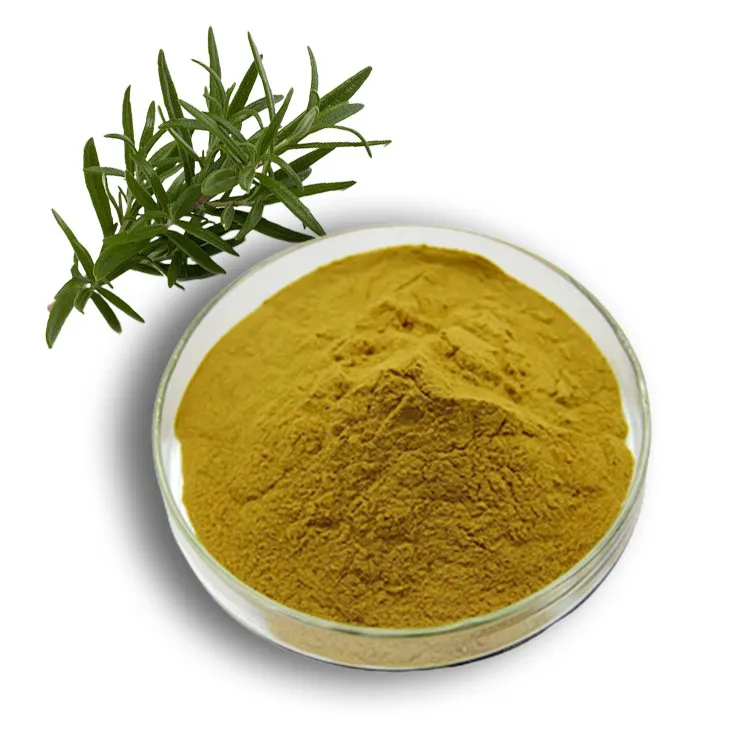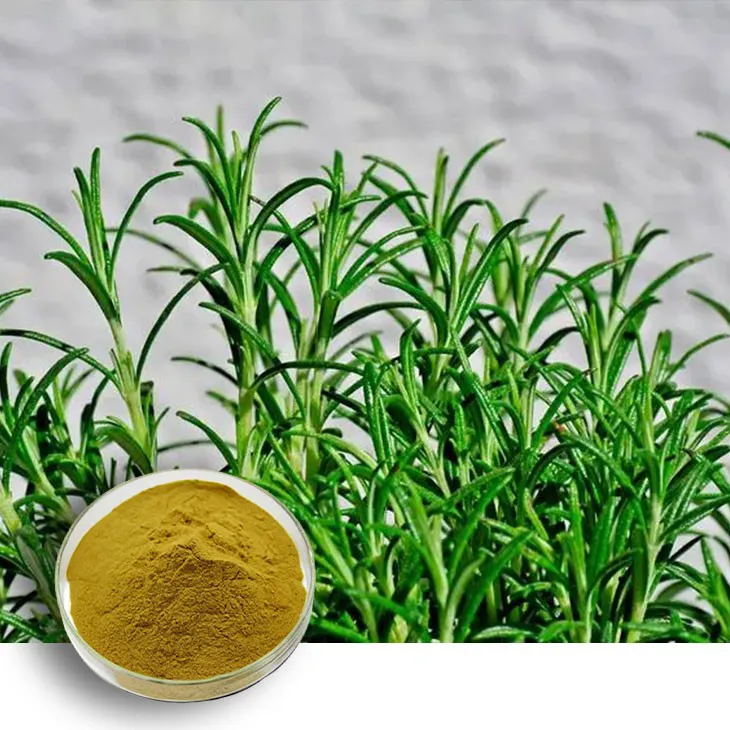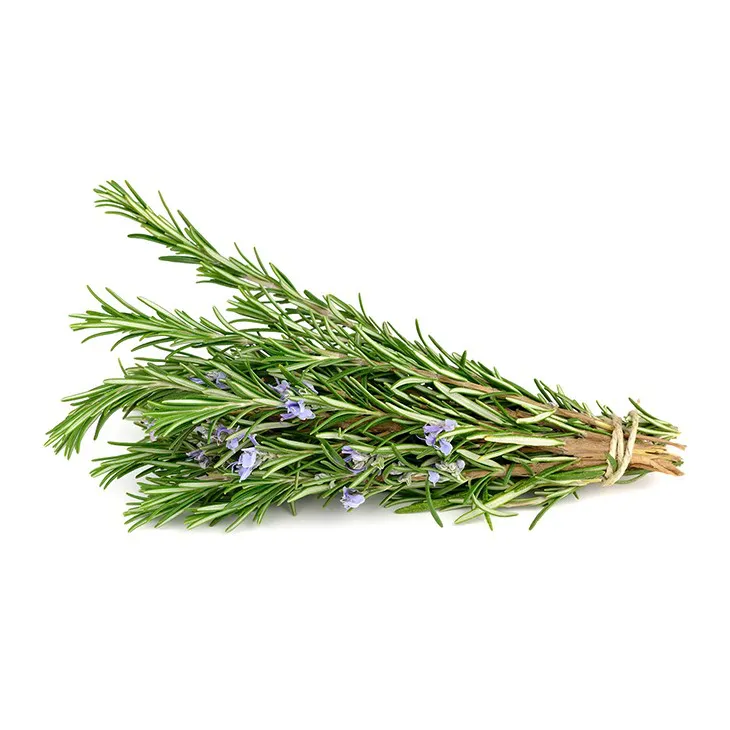- 0086-571-85302990
- sales@greenskybio.com
Rosemary extract of the best quality.
2024-11-30

1. Introduction to Rosemary extract
Rosemary extract is a remarkable substance that is obtained from the rosemary plant, Salvia rosmarinus. This plant has been used for centuries in various cultures for its medicinal and culinary properties. The extract is a concentrated form of the beneficial components present in the rosemary plant. It has gained significant attention in recent years due to its diverse range of applications and its natural origin, which makes it a preferred choice in many industries.

2. Chemical Composition of High - quality Rosemary extract
The high - quality rosemary extract is rich in several important components, with carnosic acid and rosmarinic acid being the most notable.
2.1 Carnosic Acid
Carnosic acid is a powerful antioxidant. It has the ability to scavenge free radicals in the body. These free radicals are unstable molecules that can cause damage to cells, leading to various health problems. By neutralizing them, carnosic acid helps in maintaining the integrity of cells. In addition, carnosic acid has been studied for its potential role in protecting the brain from neurodegenerative diseases. Research has shown that it may help in reducing the risk of conditions such as Alzheimer's and Parkinson's diseases.
2.2 Rosmarinic Acid
Rosmarinic acid is another important antioxidant present in rosemary extract. It has anti - inflammatory properties. Inflammation is a natural response of the body to injury or infection, but chronic inflammation can lead to a variety of diseases, including heart disease, diabetes, and certain types of cancer. Rosmarinic acid helps in reducing inflammation by inhibiting the production of inflammatory mediators in the body. It also has antibacterial and antiviral activities, which make it useful in the treatment of infections.

3. Applications in Food Preservation
One of the major applications of high - quality rosemary extract is in food preservation.
3.1 Preventing Lipid Oxidation
Rosemary extract can effectively prevent lipid oxidation in food products. Lipid oxidation is a process that occurs when fats and oils in food are exposed to oxygen, heat, or light. This process can lead to the development of off - flavors and odors, as well as a decrease in the nutritional value of the food. The antioxidants in rosemary extract, such as carnosic acid and rosmarinic acid, can react with the free radicals generated during lipid oxidation, thereby halting the oxidation process. This helps in maintaining the freshness and quality of the food for a longer period.
3.2 Extending Shelf - life
By preventing lipid oxidation and other forms of deterioration, rosemary extract can significantly extend the shelf - life of food products. It can be used in a variety of food items, including meat, poultry, fish, oils, and baked goods. For example, in the meat industry, adding rosemary extract to processed meats can help in reducing the development of rancidity and maintaining the color and texture of the meat. In the case of oils, it can prevent the oil from becoming rancid, allowing it to be stored for a longer time without spoilage.
3.3 Natural and Safe Alternative
Rosemary extract is a natural alternative to synthetic preservatives. Many consumers are becoming more conscious about the ingredients in their food and are preferring natural products. Synthetic preservatives have been associated with some health concerns in some cases, while rosemary extract, being a natural substance, is generally considered safe for consumption. It also meets the demand for clean - label products, where manufacturers are required to use simple and recognizable ingredients.

4. Applications in Cosmetics
The use of high - quality rosemary extract in cosmetics is also on the rise.
4.1 Anti - aging Benefits
The antioxidants present in rosemary extract play a crucial role in anti - aging. Free radicals in the skin can cause damage to collagen and elastin fibers, which are responsible for maintaining the firmness and elasticity of the skin. As we age, the production of these fibers decreases, and the damage caused by free radicals accumulates, leading to wrinkles and sagging skin. The antioxidants in rosemary extract can neutralize these free radicals, reducing the damage to the skin cells and helping in maintaining a youthful appearance. Additionally, some studies suggest that rosemary extract may stimulate the production of collagen, further enhancing the anti - aging effects.
4.2 Skin - protecting Properties
Rosemary extract has skin - protecting properties. It can form a protective barrier on the skin, preventing damage from environmental factors such as UV radiation, pollution, and toxins. The anti - inflammatory properties of rosmarinic acid in the extract can also help in reducing skin irritation and redness. It can be used in various cosmetic products, such as creams, lotions, serums, and masks, to improve the overall health and appearance of the skin.

5. Applications in Medicine
Rosemary extract shows great potential in the field of medicine.
5.1 Anti - inflammatory Effects
As mentioned earlier, rosmarinic acid in rosemary extract has anti - inflammatory properties. Chronic inflammation is associated with many diseases, such as arthritis, asthma, and inflammatory bowel disease. By reducing inflammation, rosemary extract may help in alleviating the symptoms of these diseases. In some studies, it has been shown to be effective in reducing joint pain and swelling in arthritis patients. However, more research is needed to fully understand its mechanisms of action and its effectiveness in different inflammatory conditions.
5.2 Antibacterial Activity
Rosemary extract also exhibits antibacterial activity. It can inhibit the growth of various bacteria, including some that are resistant to antibiotics. This makes it a potential candidate for the development of new antibacterial agents. In vitro studies have shown that it can be effective against bacteria such as Staphylococcus aureus and Escherichia coli. However, in vivo studies are required to determine its efficacy and safety for use in treating bacterial infections in humans.
6. Production and Quality Control of Rosemary Extract
The production of high - quality rosemary extract involves several steps, and strict quality control measures are essential.
6.1 Extraction Methods
There are different methods for extracting rosemary extract, including solvent extraction, supercritical fluid extraction, and steam distillation. Solvent extraction is a commonly used method, where a solvent such as ethanol or hexane is used to extract the active components from the rosemary plant. Supercritical fluid extraction, using substances like carbon dioxide in a supercritical state, is a more advanced method that can produce a purer extract with less solvent residue. Steam distillation is mainly used to obtain essential oils from rosemary, which can also be a part of the extract production process.
6.2 Quality Control
Quality control is crucial to ensure the consistency and efficacy of rosemary extract. Parameters such as the content of active ingredients (carnosic acid and rosmarinic acid), purity, and absence of contaminants are carefully monitored. Analytical techniques such as high - performance liquid chromatography (HPLC) are used to measure the levels of active components. Manufacturers also need to comply with regulatory standards to ensure the safety and quality of their products.
7. Future Prospects of Rosemary Extract
The future of high - quality rosemary extract looks promising.
7.1 Research and Development
There is ongoing research to further explore the potential applications of rosemary extract. Scientists are investigating its use in new areas such as cancer prevention and treatment, as well as its role in improving cognitive function. New extraction methods and formulations are also being developed to enhance its bioavailability and effectiveness. For example, nano - formulations of rosemary extract are being studied to improve its delivery to target cells in the body.
7.2 Market Growth
The market for rosemary extract is expected to grow in the coming years. The increasing demand for natural products in food, cosmetics, and medicine industries is driving this growth. Consumers' preference for clean - label products and the growing awareness of the health benefits of natural ingredients are also contributing factors. As more research validates its benefits, the market for rosemary extract is likely to expand further.
8. Conclusion
In conclusion, high - quality rosemary extract is truly a natural treasure. Its rich chemical composition, including carnosic acid and rosmarinic acid, gives it a wide range of applications in food preservation, cosmetics, and medicine. It offers a natural and effective solution for various problems in these industries, from preventing lipid oxidation in food to providing anti - aging benefits in cosmetics and showing anti - inflammatory and antibacterial potential in medicine. With continuous research and development, and strict quality control during production, the future of rosemary extract is bright, and it is likely to play an even more important role in improving our quality of life in the years to come.
FAQ:
What are the main components of high - quality rosemary extract?
High - quality rosemary extract is rich in antioxidants such as carnosic acid and rosmarinic acid.
How does rosemary extract contribute to food preservation?
In food, rosemary extract can prevent lipid oxidation, which helps to extend the shelf - life of products.
What are the benefits of rosemary extract in cosmetics?
In cosmetics, rosemary extract offers anti - aging and skin - protecting benefits.
What potential does rosemary extract have in medicine?
In medicine, rosemary extract shows potential in anti - inflammatory and antibacterial aspects.
How is rosemary extract obtained?
Rosemary extract is derived from the rosemary plant.
Related literature
- The Antioxidant Properties of Rosemary Extract in Food Systems"
- "Rosemary Extract: Applications in Cosmetic Formulations"
- "Medicinal Properties of Rosemary Extract: A Review"
- ▶ Hesperidin
- ▶ citrus bioflavonoids
- ▶ plant extract
- ▶ lycopene
- ▶ Diosmin
- ▶ Grape seed extract
- ▶ Sea buckthorn Juice Powder
- ▶ Beetroot powder
- ▶ Hops Extract
- ▶ Artichoke Extract
- ▶ Reishi mushroom extract
- ▶ Astaxanthin
- ▶ Green Tea Extract
- ▶ Curcumin Extract
- ▶ Horse Chestnut Extract
- ▶ Other Problems
- ▶ Boswellia Serrata Extract
- ▶ Resveratrol Extract
- ▶ Marigold Extract
- ▶ Grape Leaf Extract
- ▶ blog3
- ▶ blog4
-
The best yohimbe bark extract on the market.
2024-11-30
-
Standard - process Mulberry Leaf Extract.
2024-11-30
-
100% Pure Natural White Willow Bark Extract.
2024-11-30
-
The Best Method for Extracting Vitamin D3.
2024-11-30
-
Chinese Lycopene Powder Factories.
2024-11-30
-
Fenugreek Extract Powder
2024-11-30
-
Eyebright Extract
2024-11-30
-
White Peony Extract
2024-11-30
-
Polygonum multiflorum extract
2024-11-30
-
Rose Hip Extract
2024-11-30
-
Golden Seal Extract
2024-11-30
-
melatonin extract
2024-11-30
-
Nettle leaf extract
2024-11-30
-
Quercetin
2024-11-30
-
Kelp Extract Powder
2024-11-30





















